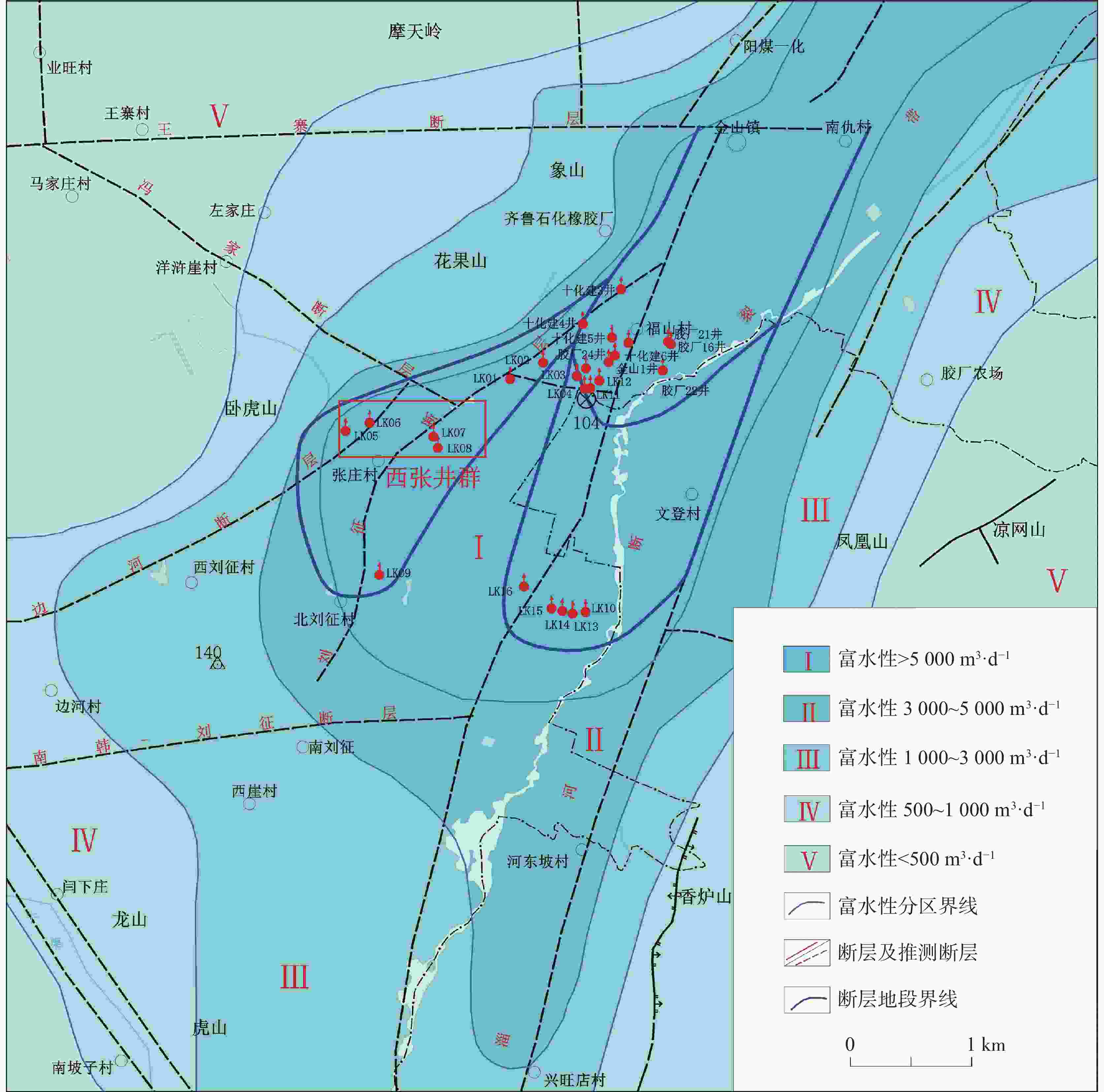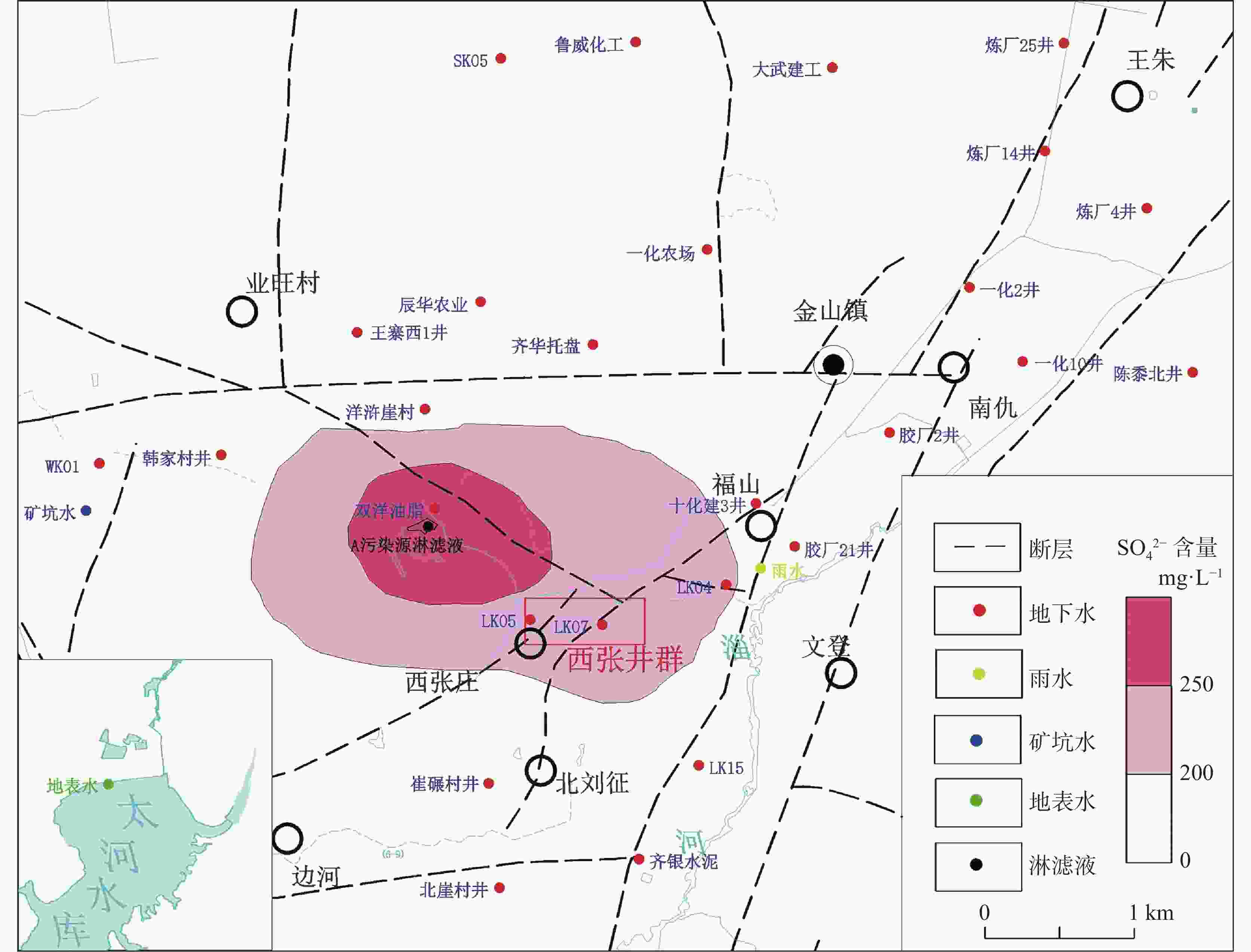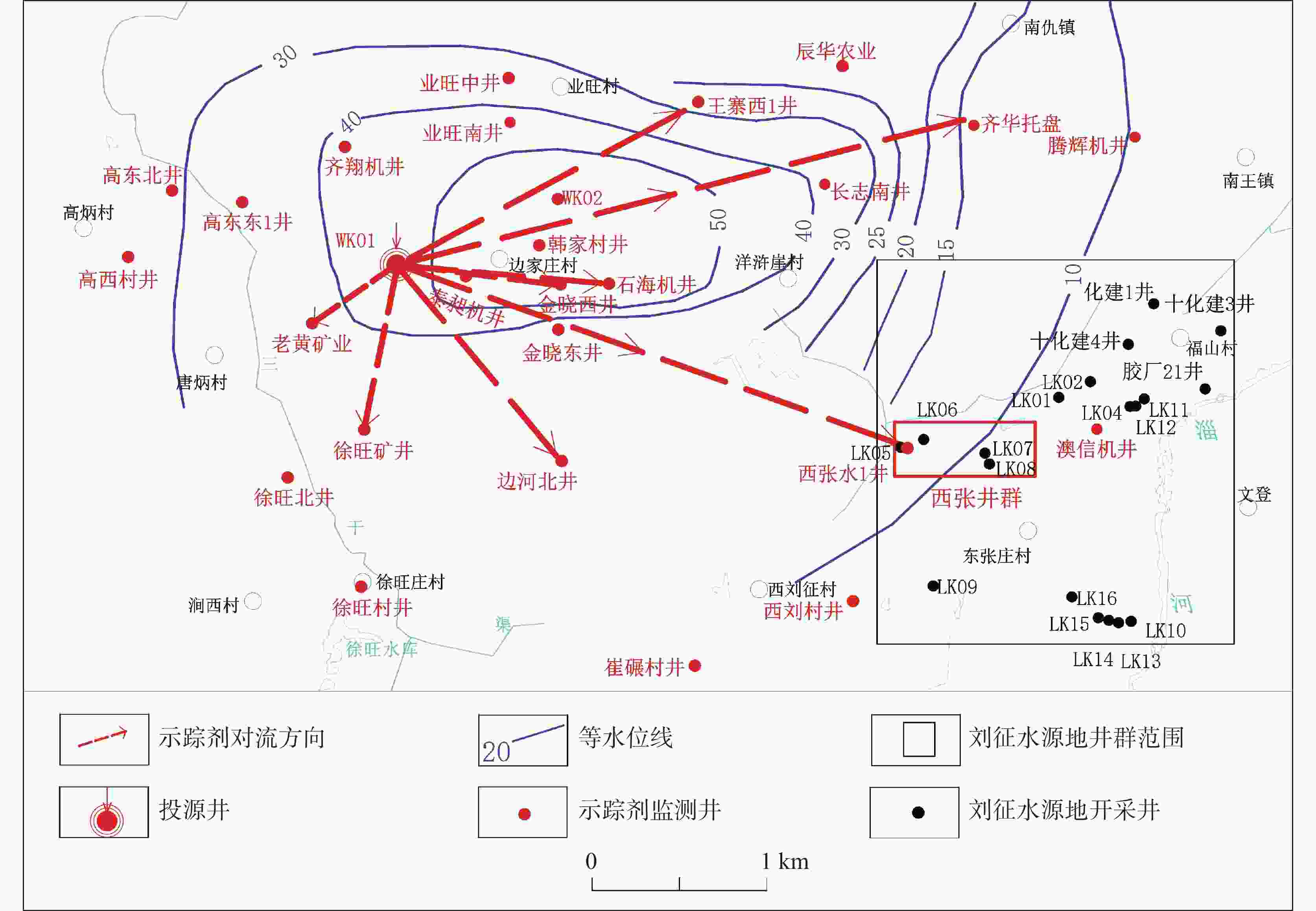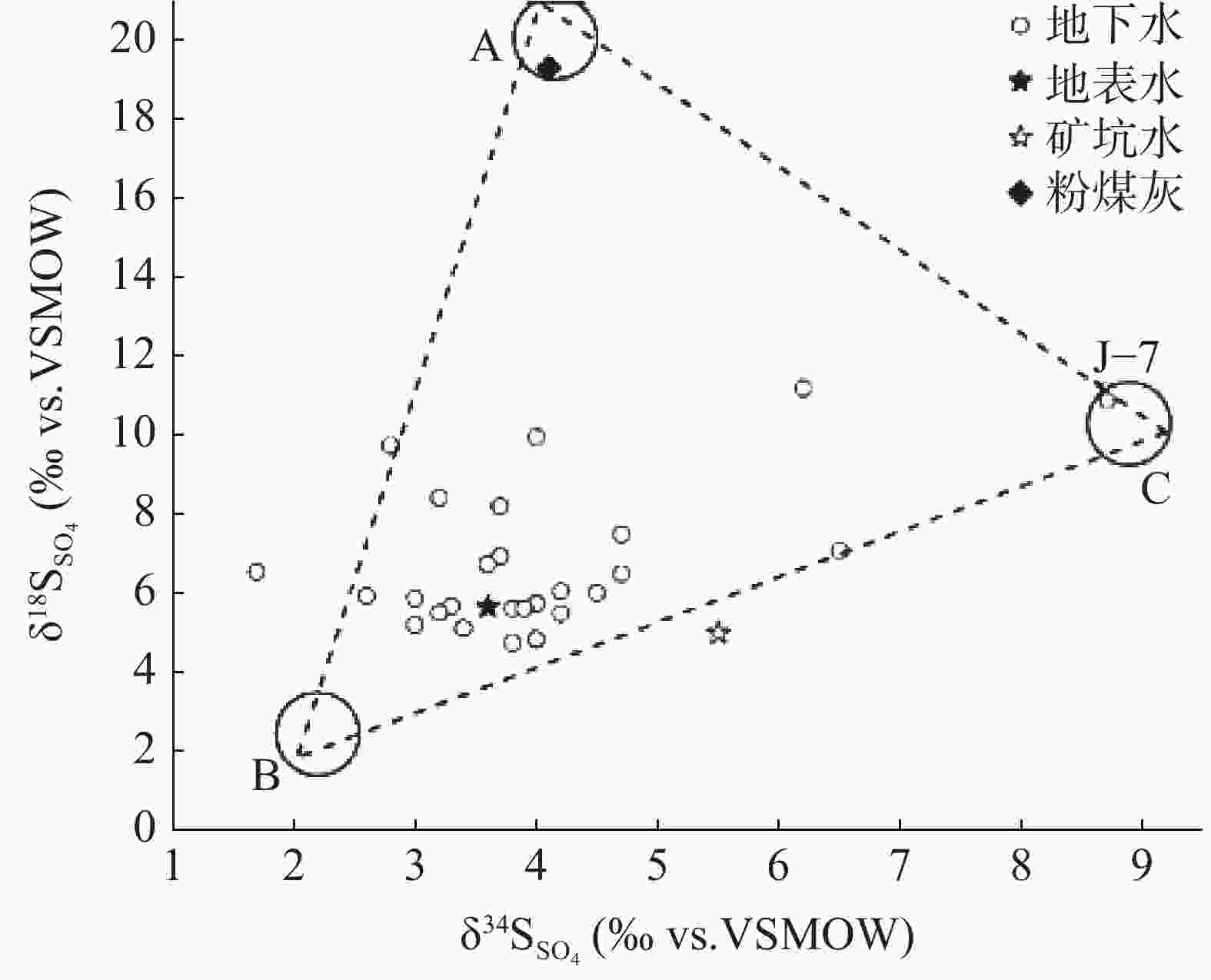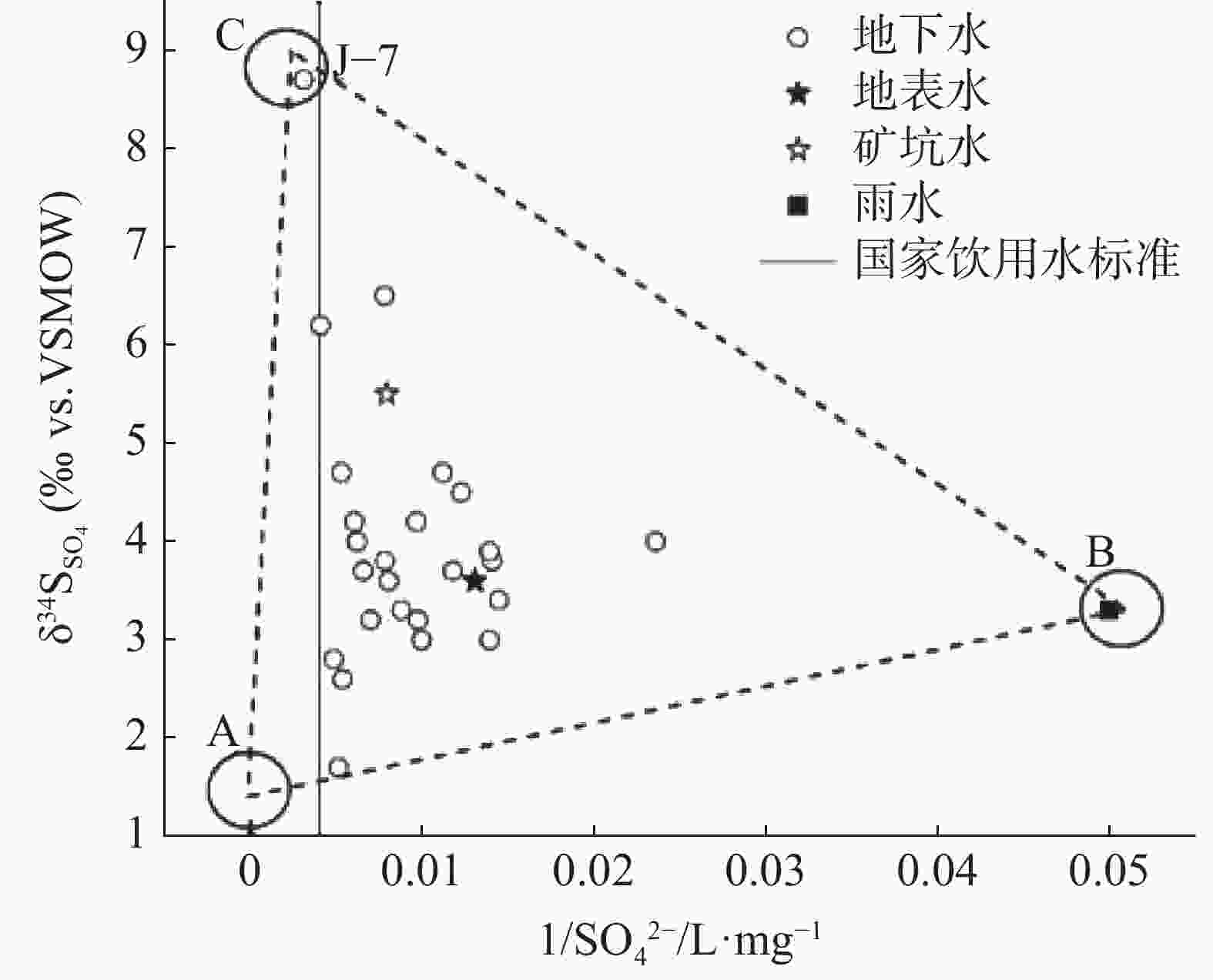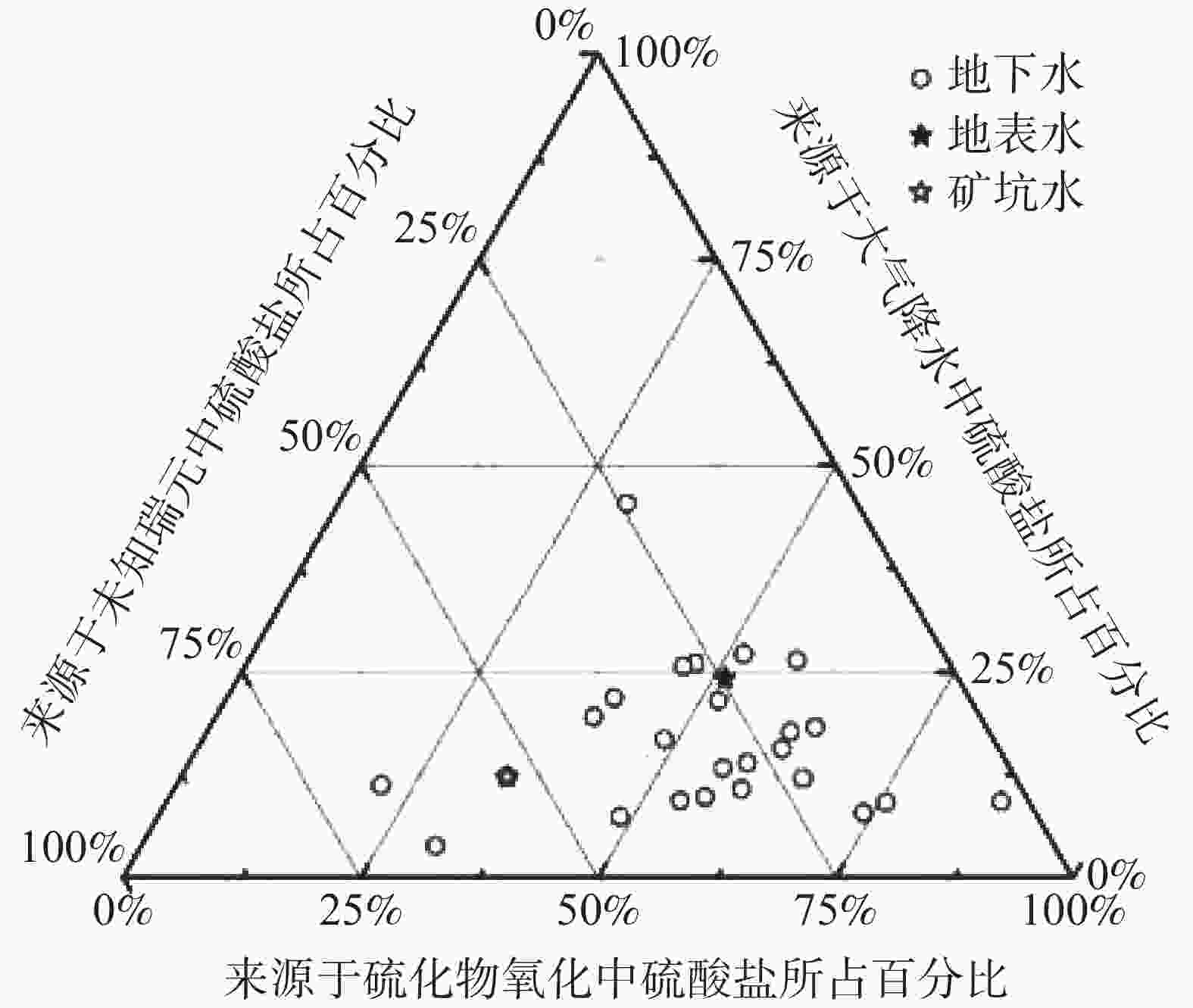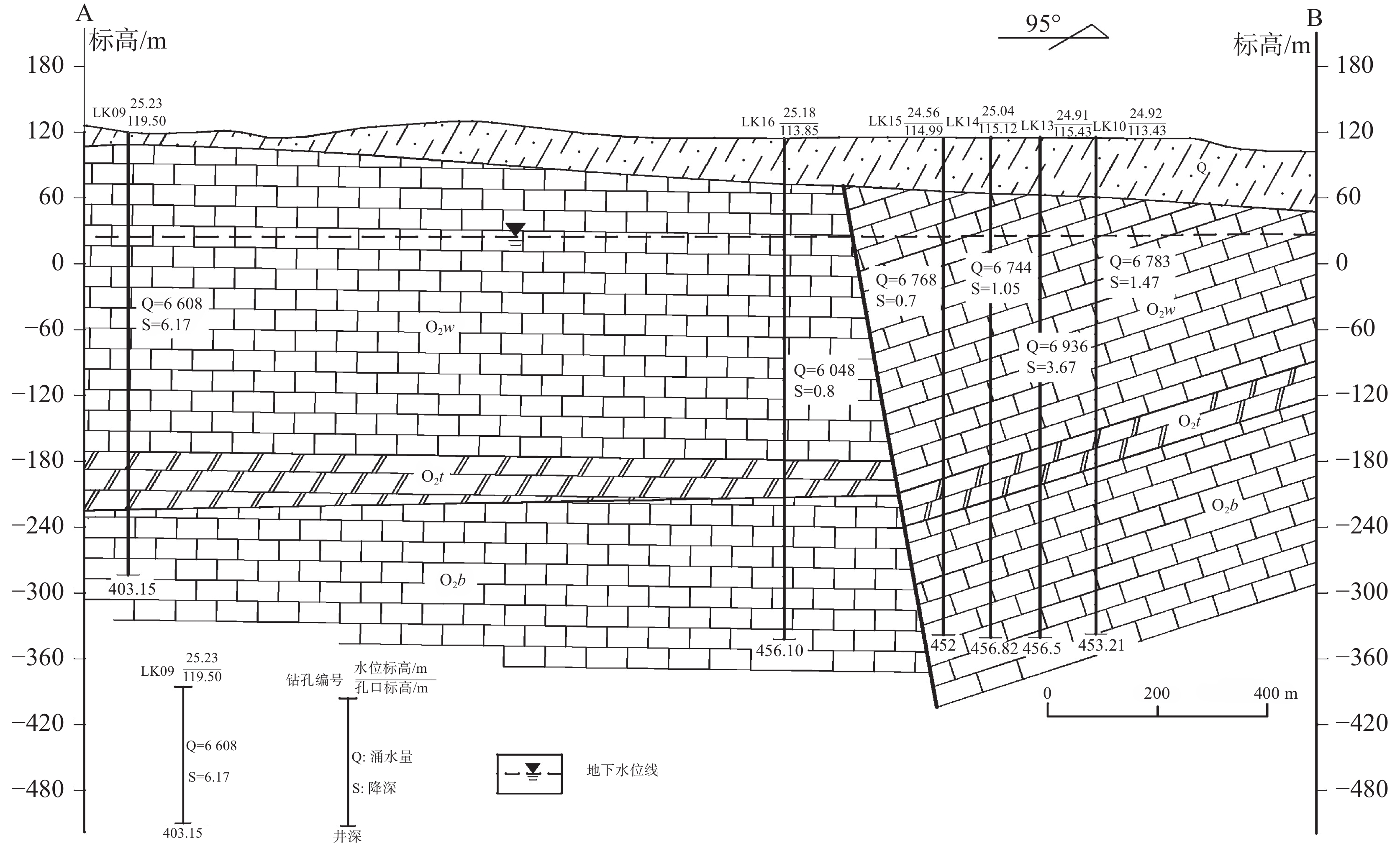Source-tracing of sulfate in groundwater of Xizhang Well Group in the Liuzheng water source area of Zibo City
-
摘要: 淄博市刘征水源地位于北方典型岩溶区,承担着当地居民和企业供水的任务,具有重要的战略保障地位。水源地水质整体较好,但西张井群硫酸盐、总硬度、氨氮等指标超出地下水Ⅲ类水标准。为查明西张井群硫酸盐的来源,开展了综合溯源分析,通过水文地质调查、水化学分析、示踪试验、同位素指示分析等综合手段研究,推测西张井群岩溶地下水硫酸盐主要来源于水源地的“特殊补给区”王寨盆地中的A污染源,其次来源于大气降水和其它未知因素。Abstract:
Affiliated to both Linzi district of Zibo City and Qingzhou City of Weifang City, the Liuzheng water source area belongs to the run-off and drainage area of the Dawu hydrogeological unit. This area plays a significant role in the water supply for residents and enterprises, and thus enjoys an important strategic position. There are four pumping well groups in the water source area, among which the Xizhang Well Group is located in the west of the water source area, including four wells from LK05 to LK08. The water source area is located in the intermountain depression and river valley area with the Quaternary system of 20-meter to 70-meter thickness, underlain with Jiulong Group (Є3-O1J) and Majiagou Group (O2-3M). Zihe fault zone, Bianhe Fault, Wangzhai fault and other fault structures are developed in this area, which control the stratum distribution and groundwater movement. At present, the water-bearing rock groups with water-supply significance in the water source area are mainly those of carbonate fissure karst, which are representatives in areas of karst water source in the north of China. The aquifer lithology, highly rich in water, is mainly composed of limestone, dolomitic limestone and dolomite of the Majiagou Group and Jiulong Group of Sanshanzi Formation. The overall runoff of karst groundwater is northeast oriented along the fault zone of the Zihe river, and the groundwater dynamics are influenced by human mining and atmospheric precipitation. The hydrochemical type is mainly HCO3-Ca (Ca·Mg), and the water quality is generally good, but the indexes of sulfate, total hardness and ammonia nitrogen in the Xizhang Well Group exceed the permitted standard of Class III groundwater. Based on the test analysis of karst groundwater in Xizhang Well Group and its surrounding areas, it is found that the area where sulfate exceeds the permitted level is mainly distributed in the area of Yanghuya-Shuangyangyouzhi, and the sulfate content decreases from the center of this area to its surrounding parts. At present, the research on karst water system in the Liuzheng water source area mainly focuses on the sequential dynamic change of water quality and quantity and the spacial distribution characteristics. However, few studies have been conducted on the directional sources of chemical components in karst groundwater. In order to ensure the safety of water supply, it is urgent to carry out the source-tracing analysis of groundwater sulfate under the influence of human activities. The sources of chemical components in groundwater are generally studied systematically by statistical analysis, hydrogeochemical analysis, fuzzy mathematics, numerical simulation and other methods based on geological and hydrogeological conditions. All kinds of methods have specific applicable conditions and advantages, but most of them are difficult to trace the source quickly and accurately, and identify the specific migration process. In this study, hydrogeochemical analysis, tracer test, isotope indication analysis and other methods are used to carry out a comprehensive source-tracing analysis of sulfate in the Xizhang Well Group. The results show that the method used in this study is effective in source-tracing. Based on the analysis of the dynamic characteristics of groundwater and the mechanism of recharge, runoff and discharge in the Liuzheng water source area, the power source of sulfate source was analyzed by tracer test. Besides, the main path of sulfate migration was described, and the target area of sulfate source—Wangzhai basin, a special recharge area of water source—was determined. On the basis of power source analysis, isotope samples were collected in the target area and its surrounding areas, and the contribution of different end-member sources to groundwater sulfate was calculated by using the ternary mixing model of sulfate content and sulfur and oxygen isotope composition, and then the material sources of the pollution in the Xizhang Well Group were quantified. The calculation results show that the proportion of sulfate from sulfide oxidation in groundwater is large, and there are 17 water samples exceeding 50%. Because there is A Pollution Source instead of coal-bearing strata in the area, the A end-member represents that the sulfate of this area comes from A Pollution Source. There were no water samples occupying more than 50% in the B end-member, indicating that the contribution of atmospheric precipitation to sulfate in water was small. There were 3 water samples accounting for more than 50% in the C end-member, indicating that other human factors also contributed to a certain proportion. The comprehensive analysis confirms that the main source of sulfate in the karst groundwater of the Xizhang Well Group is the A Pollution Source in Wangzhai basin, followed by the atmospheric precipitation and other unknown factors. -
Key words:
- the Liuzheng water source area /
- karst /
- groundwater /
- source-tracing of sulfate /
- isotope
-
表 1 西张井群部分水质监测指标一览表/mg·L−1
Table 1. Monitoring indexes of water quality in Xizhang Well Group/mg·L−1
井编号 取样日期 NH$_4^{+}$ Cl− NO$_2^{−}$ ${\rm{NO}}_3^{-}$ ${\rm{SO}}_4^{2-}$ pH COD 总硬度 溶解性总固体 LK05 7.20 2.78 69.85 6.60 55.71 215.89 7.59 1.58 546.66 741.10 7.25 <0.04 71.27 8.79 55.92 230.83 7.66 0.82 549.49 754.16 7.30 1.25 72.87 5.00 55.74 234.93 7.31 0.87 534.08 707.98 8.05 3.03 68.97 <0.008 52.78 222.14 7.88 0.82 528.56 715.04 8.10 <0.04 70.70 3.78 58.49 224.61 8.08 1.33 527.86 696.22 8.15 <0.04 70.82 6.86 53.88 225.74 7.84 1.61 570.48 697.01 LK06 7.20 4.55 79.93 10.19 56.67 255.03 7.58 0.81 547.72 799.76 7.25 3.25 84.16 6.02 56.74 267.13 7.44 0.82 584.33 828.38 7.30 1.67 82.74 5.00 56.69 262.59 7.32 0.75 576.13 784.43 8.05 4.53 82.31 <0.008 54.39 257.12 7.96 0.73 564.30 786.43 8.10 <0.04 81.69 10.42 54.82 254.90 7.95 4.50 552.44 751.66 8.15 <0.04 81.18 4.84 54.92 253.59 7.74 4.21 605.70 762.58 LK07 7.25 <0.04 88.02 8.30 54.79 260.11 7.60 1.39 586.74 821.78 7.30 2.03 86.51 6.25 53.21 255.55 7.54 0.71 559.22 761.84 8.05 3.58 81.52 <0.008 51.70 240.11 7.80 0.73 555.98 753.86 8.10 <0.04 81.55 7.79 52.30 238.51 7.90 3.33 539.33 725.95 8.15 <0.04 81.27 7.77 52.03 237.06 7.78 3.37 587.63 740.58 LK08 7.25 <0.04 68.97 4.87 50.74 207.45 7.66 1.47 530.44 713.39 7.30 <0.04 57.87 2.00 47.71 180.34 7.41 1.46 476.55 731.96 8.05 1.03 52.18 0.86 44.96 163.12 7.71 0.82 470.32 600.12 8.10 <0.04 53.16 未检出 48.65 162.06 7.88 0.67 423.17 545.79 8.15 <0.04 52.73 2.08 46.01 162.28 7.87 1.35 496.17 576.71 表 2 西张井群污染来源分析部分样品测试结果一览表
Table 2. Test results of pollution source analysis of some samples collected from the Xizhang Well Group
样品
采集点TDS
mg·L−1总硬度
mg·L−1Cl−
mg·L−1${\rm{SO}}_4^{2-}$
mg·L−1δ2H
(H2O)δ18O
(H2O)δ18O
(${\rm{SO}}_4^{2-}$)δ34S
(${\rm{SO}}_4^{2-}$)WK01 617.50 501.57 35.62 194.98 −58.1 −8.1 6.56 1.7 王寨西1井 967.11 826.28 151.99 206.42 −60.3 −8.5 9.75 2.8 齐华托盘 939.20 672.61 154.34 186.55 −53.5 −7.8 5.94 2.6 一化农场 770.57 661.56 53.26 127.79 −62.9 −8.6 4.74 3.8 J-7 1 314.44 697.89 341.33 322.00 −53.7 −7.2 10.88 8.7 LK05 715.09 543.50 69.40 224.02 −60.5 −8.2 − − 北崖村井 553.05 473.04 65.89 113.84 −58.2 −8.1 5.68 3.3 LK15 357.27 304.67 27.79 71.17 −61.3 −8.7 5.63 3.8 LK04 575.98 424.01 66.97 189.44 −62.2 −8.7 7.50 4.7 胶厂2井 443.66 369.34 48.27 81.65 −60.1 −8.5 6.02 4.5 炼厂25井 419.82 360.74 40.81 69.21 −61.9 −8.4 5.12 3.4 大武建工 461.14 370.48 26.44 124.16 −57.9 −8.1 6.74 3.6 SK05 565.45 486.61 59.89 102.49 −60.6 −8.4 5.51 3.2 炼厂4井 413.05 356.89 41.91 71.78 −61.8 −8.4 5.62 3.9 陈黍北井 845.54 663.25 164.05 165.53 −57.6 −8.2 5.50 4.2 徐旺矿坑 371.49 282.09 47.29 126.12 −52.5 −6.8 5.00 5.5 太河水库 23.62 14.40 0.42 76.55 −52.5 −7.2 5.66 3.6 雨水 238.02 191.04 13.45 4.75 −58.1 −8.2 − − A污染源淋滤液 2 159.76 19.29 4.1 -
[1] 张江华, 梁永平, 王维泰, 韩行瑞, 侯光才. 硫同位素技术在北方岩溶水资源调查中的应用实例[J]. 中国岩溶, 2009, 28(3):235-241. doi: 10.3969/j.issn.1001-4810.2009.03.002ZHANG Jianghua, LIANG Yongping, WANG Weitai, HAN Xingrui, HOU Guangcai. A practical use of 34S in the investigation of karst groundwater resource in North China[J]. Carsologica Sinica, 2009, 28(3):235-241. doi: 10.3969/j.issn.1001-4810.2009.03.002 [2] 李瑞, 肖琼, 刘文, 郭芳, 潘谋成, 于奭. 运用硫同位素、氮氧同位素示踪里湖地下河硫酸盐、硝酸盐来源[J]. 环境科学, 2015, 36(8):2877-2886. doi: 10.13227/j.hjkx.2015.08.020LI Rui, XIAO Qiong, LIU Wen, GUO Fang, PAN Moucheng, YU Shi. Using δ34S-SO42- and δ15N-NO3-, δ18O-NO3- to trace the sources of sulfur and nitrate in Lihu lake undergound water, Guangxi, China[J]. Environmental Science, 2015, 36(8):2877-2886. doi: 10.13227/j.hjkx.2015.08.020 [3] 张可嘉. 宁阳化工区地下水水化学特征及污染来源识别研究[D]. 济南: 济南大学, 2015.ZHANG Kejia. Research on groundwater chemical characteristics and pollution source identification in Ningyang Chemical Industry Area[D]. Jinan: Jinan University, 2015. [4] 吴锡松, 张强, 姜光辉, 郭芳, 吴华英, 骆俊晖. 桂林甑皮岩岩溶地下水硝酸盐来源与转化[J]. 中国岩溶, 2020, 39 (2): 164-172. doi: 10.11932/karst20200202WU Xisong, ZHANG Qiang, JIANG Guanghui, GUO Fang, WU Huaying, LUO Junhui. Sources and transformation of nitrate in karst groundwater of Zengpiyan site, Guilin. [J]. Carsologica Sinica, 2020, 39 (2): 164-172. doi: 10.11932/karst20200202 [5] 马文娟, 刘丹妮, 杨芳, 王鹤立, 王希欢, 李崇蔚, 廖海清. 水环境中污染物同位素溯源的研究进展[J]. 环境工程技术学报, 2020, 10(2):242-250. doi: 10.12153/j.issn.1674-991X.20190081MA Wenjuan, LIU Danni, YANG Fang, WANG Heli, WANG Xihuan, LI Chongwei, LIAO Haiqing. Research progress in isotope methods for tracing contaminants in water environment[J]. Journal of Environmental Engineering Technology, 2020, 10(2):242-250. doi: 10.12153/j.issn.1674-991X.20190081 [6] 高旭波, 王万洲, 侯保俊, 高列波, 张建友, 张松涛, 李成城, 姜春芳. 中国北方岩溶地下水污染分析[J]. 中国岩溶, 2020, 39 (3): 287-298. doi: 10.11932/karst2020y25GAO Xubo, WANG Wanzhou, HOU Baojun, GAO Liebo, ZHANG Jianyou, ZHANG Songtao, LI Chengcheng, JIANG Chunfang. Analysis of karst groundwater pollution in northern China. [J]. Carsologica Sinica, 2020, 39 (3): 287-298. doi: 10.11932/karst2020y25 [7] 叶匡旻, 孟凡生, 张铃松, 姚志鹏, 薛浩, 程佩暄, 张道萍. 松花江流域氮时空分布特征及源解析研究[J]. 环境科学研究, 2020, 33(4):901-910. doi: 10.13198/j.issn.1001-6929.2020.02.04YE Kuangmin, MENG Fansheng, ZHANG Lingsong, YAO Zhipeng, XUE Hao, CHENG Peixuan, ZHANG Daoping. Spatial-temporal variation characteristics and source analysis of nitrogen pollution in the Songhua river basin[J]. Research of Environmental Sciences, 2020, 33(4):901-910. doi: 10.13198/j.issn.1001-6929.2020.02.04 [8] 彭凯, 刘文, 魏善明, 刘传娥, 陈燕, 董浩, 苏动, 袁炜, 韩琳. 基于水化学、同位素特征的济南岩溶地下水补给来源研究[J]. 中国岩溶, 2020, 39(5):650-657. doi: 10.11932/karst20200501PENG Kai, LIU Wen, WEI Shanming, LIU Chuane, CHEN Yan, DONG Hao, SU Dong, YUAN Wei, HAN Lin. Study on the recharge source of karst groundwater in Jinan City based on hydrogeochemical and isotopic characteristics[J]. Carsologica Sinica, 2020, 39(5):650-657. doi: 10.11932/karst20200501 [9] 王会霞, 史浙明, 姜永海, 廉新颖, 杨昱, 冯帆, 贾永锋. 地下水污染识别与溯源指示因子研究进展[J]. 环境科学研究, 2021, 34(8):1886-1898. doi: 10.13198/j.issn.1001-6929.2021.03.10WANG Huixia, SHI Zheming, JIANG Yonghai, LIAN Xinying, YANG Yu, FENG Fan, JIA Yongfeng. Research progress on indicator of groundwater pollution identification and traceability[J]. Research of Environmental Sciences, 2021, 34(8):1886-1898. doi: 10.13198/j.issn.1001-6929.2021.03.10 [10] 靳孟贵, 张结, 张志鑫, 曹明达, 黄鑫. 地下水硫酸盐溯源的进展、问题和发展趋势[J]. 地质科技通报, 2022, 41(5):160-171.JIN Menggui, ZHANG Jie, ZHANG Zhixin, CAO Mingda, HUANG Xin. Progress, problems and development trend of sulfate traceability in groundwater[J]. Geological Science and Technology Bulletin, 2022, 41(5):160-171. [11] 翟虎威, 胡晓兵, 张凯, 马永明, 高旭波, 靳建红. 基于同位素指示的辛安泉域岩溶水系统识别[J/OL]. 中国岩溶: 1-13[2023-02-17]. http://kns.cnki.net/kcms/detail/45.1157.P.20230203.1754.001.html.ZHAI Huwei, HU Xiaobing, ZHANG Kai, MA Yongming, GAO Xubo, JIN Jianhong. Identification of karst water system in Xin'an spring region based on isotope indication[J]. Carsologica Sinica: 1-13[2023-02-17]. http://kns.cnki.net/kcms/detail/45.1157.P.20230203.1754.001.html. [12] 杨丽芝, 刘治政, 朱恒华, 周洋, 纪汶龙, 刘柏含, 刘春华, 李双, 包锡鳞, 尚浩. 淄博市大武水源地三维可视化信息系统建设成果报告[R]. 济南: 山东省地质调查院, 2019. [13] 荆甫荣, 徐绍辉, 张胜亮, 魏鲁峰, 李万香, 赵玉仁. 淄博市大武水源地地下水资源验算报告[R]. 济南: 山东省地矿局801水文地质工程地质大队, 1989. [14] 陈奂良, 徐士民, 汪新芹, 程秀明, 秦耀军, 王庚, 马超, 范国城, 王彬, 郭道冉, 马丁, 孙静, 李娅, 张若曦. 淄博市刘征地区供水水文地质勘察报告[R]. 济南: 山东省地矿工程勘察院, 2013. [15] 徐士民, 姜玉敏, 范国城. 王寨盆地水文地质条件新认识[J]. 科技视界, 2014, 102(15):70. doi: 10.19694/j.cnki.issn2095-2457.2014.15.048XU Shimin, JIANG Yumin, FAN Guocheng. New understanding of hydrogeological conditions in Wangzhai basin[J]. Science & Technology Vision, 2014, 102(15):70. doi: 10.19694/j.cnki.issn2095-2457.2014.15.048 [16] 兰晓荀, 曹倩倩, 迟光耀. 淄博市大武水源地示踪试验研究报告[R]. 济南: 济南大学, 2018.LAN Xiaoxun, CAO Qianqian, CHI Guangyao. Research report on tracing test of Dawu water source in Zibo City[R]. Jinan: Jinan University, 2018. [17] 陈奂良, 王金晓, 林广奇, 张文强, 滕跃. 岩溶地下水污染预警:以山东省刘征水源地为例[J]. 安全与环境工程, 2021, 28(3):130-136.CHEN Huanliang, WANG Jinxiao, LIN Guangqi, ZHANG Wenqiang, TENG Yue. Early warning evaluation of karst groundwater contamination: The case of Liuzheng water source in Shandong Province[J]. Safety and Environmental Engineering, 2021, 28(3):130-136. [18] 程亚平, 陈余道. 岩溶地下河定量示踪研究方法综述[J]. 桂林理工大学学报, 2016, 36(2):242-246. doi: 10.3969/j.issn.1674-9057.2016.02.007CHENG Yaping, CHEN Yudao. Review of quantitative tracing studies on karst underground river[J]. Journal of Guilin University of Technology, 2016, 36(2):242-246. doi: 10.3969/j.issn.1674-9057.2016.02.007 [19] 刘树林, 范泽英, 杨平恒, 卢丙清, 黄山松, 张宇, 陈雪彬. 基于在线高分辨率示踪试验的岩溶地下河管道特征分析:以重庆市彭水县岩窝坨至纸厂泉段地下河为例[J]. 西南大学学报(自然科学版), 2015, 37(10):125-130.LIU Shulin, FAN Zeying, YANG Pingheng, LU Bingqing, HUANG Shansong, ZHANG Yu, CHEN Xuebin. Determination of the conduit structure in a karst subterranean river based on the technique of online and high-resolution tracing test: A case study in Pengshui county, Chongqing[J]. Journal of Southwest University (Natural Science Edition), 2015, 37(10):125-130. [20] 邢立亭, 李常锁, 周娟, 宋广增, 邢学睿. 济南泉域岩溶径流通道特征[J]. 科学技术与工程, 2017, 17(17):57-65. doi: 10.3969/j.issn.1671-1815.2017.17.005XING Liting, LI Changsuo, ZHOU Juan, SONG Guangzeng, XING Xuerui. The characteristics of karst channel in the spring of Jinan spring region[J]. Science Technology and Engineering, 2017, 17(17):57-65. doi: 10.3969/j.issn.1671-1815.2017.17.005 [21] 杨立峥, 刘俊业. 试用示踪剂浓度-时间曲线分析岩溶管道的结构特征[J]. 成都地质学院学报, 1979(4):44-49. [22] 余江祥, 李升. 旱区地下水SO42-来源与地下水循环分析[J]. 水电能源科学, 2022, 40(12):120-124, 185.YU Jiangxiang, LI Sheng. SO42- source of groundwater in arid area and analysis of groundwater circulation[J]. Hydropower Energy Science, 2022, 40(12):120-124, 185. [23] 曹慧丽, 李伟, 苏春利, 赵乐, 卫方成, 陈志宇, 梁川. 水化学及硫同位素对大冶矿区地下水硫酸盐污染的指示[J]. 地球科学, 2023, 48(9): 3432-3443CAO Huili, LI Wei, SU Chunli, ZHAO Le, WEI Fangcheng, CHEN Zhiyu, LIANG Chuan. Indication of hydrochemistry and δ34S-SO42- on sulfate pollution of groundwater in Daye mining area[J]. Earth science, 2023, 48(9): 3432-3443 [24] 邱述兰. 利用多同位素(δ34S, δ15N, 87Sr/86Sr和δ13CDIC)方法示踪岩溶农业区地下水中硝酸盐和硫酸盐的污染: 以重庆市青木关地下河系统为例[D]. 重庆: 西南大学, 2012.QIU Shulan. Use of multiple environmental isotopes (δ34S, δ15N, 87Sr/86Sr and δ13CDIC) to trace sulfate and nitrate contaminations of karst groundwater in an agricultural area: A case from Qingmuguan subterranean stream system[D]. Chongqing: Southwest University, 2012. [25] 张晟瑀. 宁夏南部西吉县劣质地下水形成机理及治理技术研究[D]. 吉林: 吉林大学, 2013.ZHANG Shengyu. Study on formation mechanism and treatment technology of inferior groundwater in Xiji county, southern Ningxia[D]. Jilin: Jilin University, 2013. [26] 黄奇波, 覃小群, 刘朋雨, 唐萍萍. 汾阳地区不同类型地下水SO4 2−、δ34S的特征及影响因素[J]. 第四纪研究, 2014, 34(2):364-371. doi: 10.3969/j.issn.1001-7410.2014.02.10HUANG Qibo, QIN Xiaoqun, LIU Pengyu, TANG Pingping. The characteristics and influencing factors of SO4 2− and sulfate isotope (δ34S) in different types of groundwater in Fenyang, Shanxi Province[J]. Quaternary Sciences, 2014, 34(2):364-371. doi: 10.3969/j.issn.1001-7410.2014.02.10 [27] 张秋霞, 周建伟, 康凤新, 林尚华, 魏东, 张黎明, 袁磊. 淄博煤矿区地下水污染水动力和同位素解析[J]. 环境科学与技术, 2016, 39(8):116-122.ZHANG Qiuxia, ZHOU Jianwei, KANG Fengxin, LIN Shanghua, WEI Dong, ZHANG Liming, YUAN Lei. Hydrodynamic analysis and isotope tracing for probing into groundwater pollution of Zibo mining area[J]. Environmental Science & Technology, 2016, 39(8):116-122. [28] 朱勋杰. 齐鲁石化热电厂洋浒崖灰场扬尘控制技术及优化研究[D]. 苏州: 苏州大学, 2007.ZHU Xunjie. Research on dust control technology and optimization of Yanghu cliff ash field in Qilu petrochemical thermal power plant[D]. Suzhou: Soochow University, 2007. -




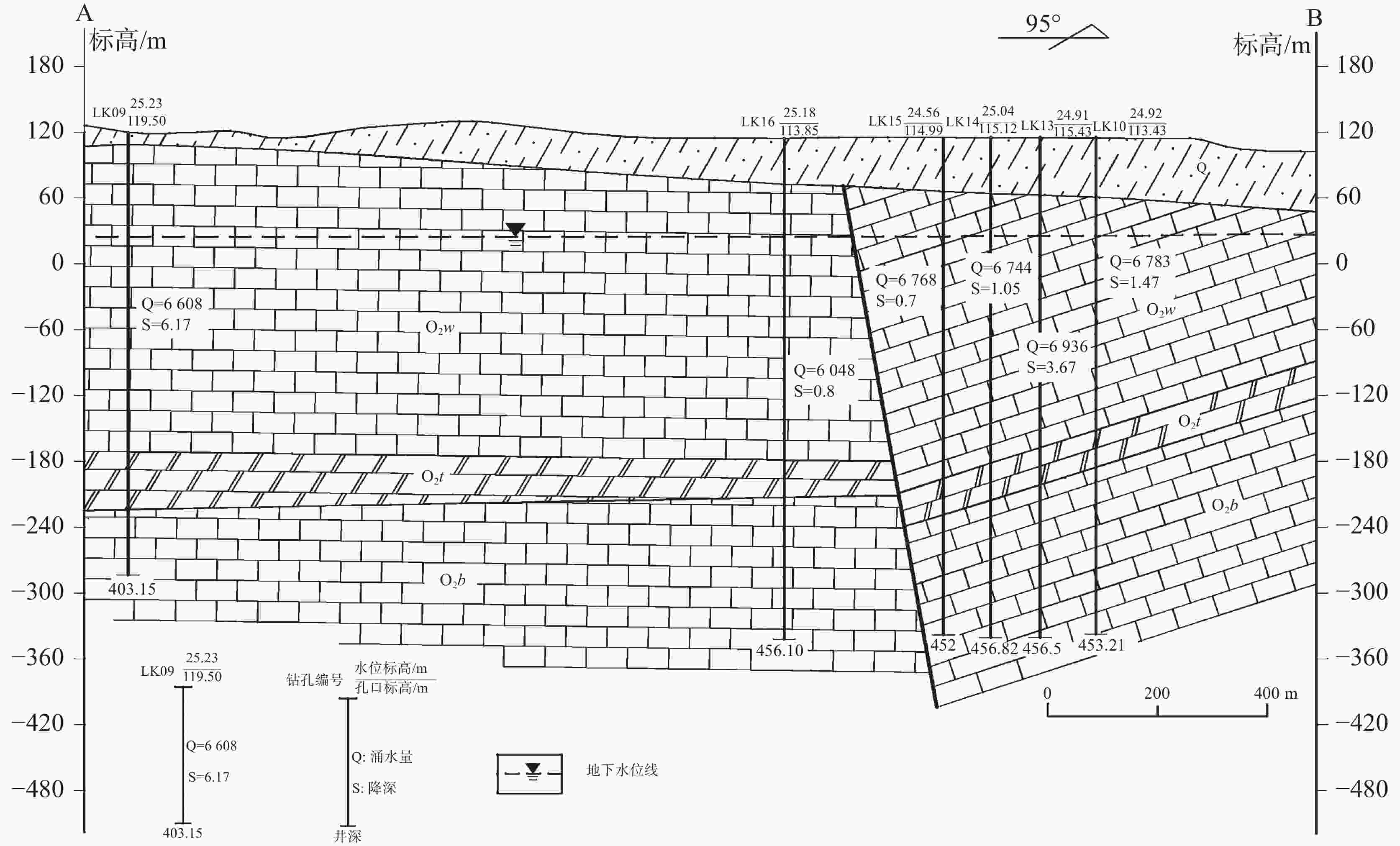
 下载:
下载:
